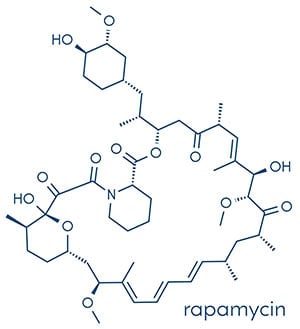
Hey everyone! So, I just stumbled upon some fascinating stuff about rapamycin, and I can’t help but connect the dots between this modern scientific breakthrough and some wild theories about ancient aliens. Stick with me here; it’s going to be a fun ride!
First off, let’s talk about rapamycin. This compound was discovered way back in 1972 on Easter Island, which is already a place shrouded in mystery thanks to its massive stone statues and the whole “how did they even build those?” question. Scientists initially found it in a soil sample, and it was thought to be an antifungal agent. But then things got really interesting when researchers realized that rapamycin has some serious potential for anti-aging. I mean, who wouldn’t want to slow down the clock a bit, right?
What’s really cool is that rapamycin works by inhibiting the mTOR pathway, which is like a master regulator of cell growth and metabolism. When scientists started testing it on mice, they found that it could actually extend their lifespan. Imagine that! A little pill that could help us live longer and healthier lives. It’s like something straight out of a sci-fi movie.
Now, here’s where my mind starts to wander into the realm of ancient aliens. Think about it: Easter Island is famous for its mysterious Moai statues and the Rapa Nui people who created them. Some folks believe that these ancient civilizations had help from extraterrestrial beings—maybe even advanced technology that we can’t fully comprehend today. What if the discovery of rapamycin is somehow linked to this ancient knowledge? Could it be that our ancestors were onto something with their rituals or practices that we’ve only just begun to understand?
I mean, if you look at how civilizations have always sought out ways to prolong life or enhance health—think of all those myths about elixirs of immortality or the fountain of youth—it feels like there’s been a universal human quest for longevity throughout history. Maybe those ancient aliens dropped some knowledge on our ancestors about how to harness the power of nature in ways we’re just now starting to figure out scientifically.
And let’s not forget that rapamycin has some immunosuppressive properties, which makes it tricky for clinical use. It’s almost like a double-edged sword—much like how many ancient tales depict powerful artifacts that come with risks. Could this be a modern echo of wisdom passed down through generations? It makes you wonder what other secrets are hidden in our past.
In any case, I’m excited about what rapamycin could mean for our future. The idea of extending life and improving health is something we all dream about. And who knows? Maybe as we dive deeper into the science behind aging and longevity, we’ll uncover more connections to our past—whether that involves ancient civilizations or even beings from beyond our planet.
So, what do you all think? Is there a chance that our quest for anti-aging solutions could be intertwined with ancient wisdom—or perhaps even extraterrestrial influence? Let me know your thoughts.